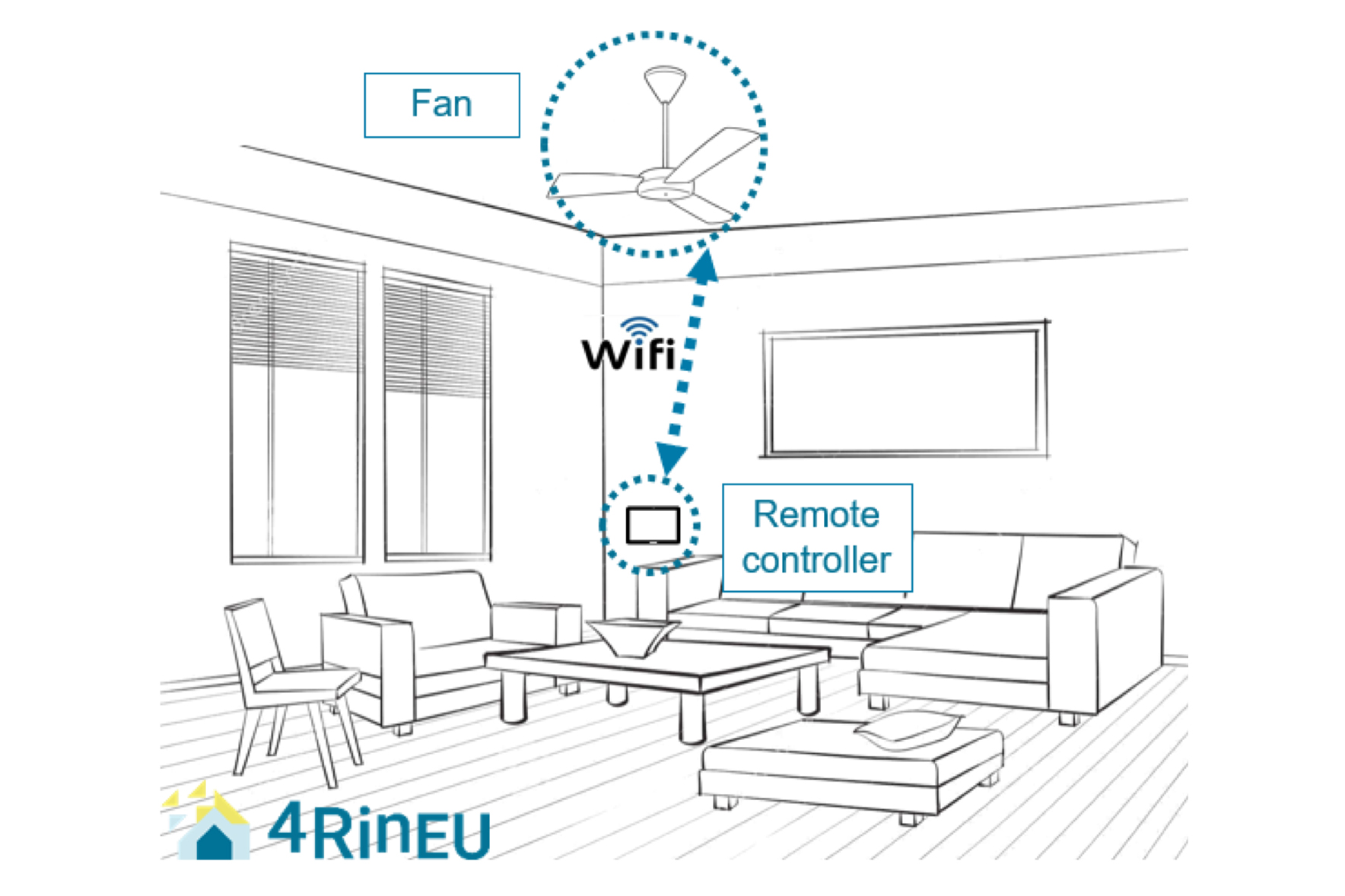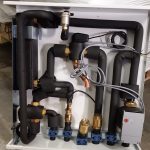Smart ceiling fans: a low-energy solution for thermal comfort
- 4RinEU Ceiling fan concept
In indoor environments, human thermal comfort is affected by four physical quantities: air temperature, mean radian temperature, relative humidity, and air speed. The mean radiant temperature depends on the temperature of the surfaces around a person, and it is usually combined with the air temperature into a unique value called operative temperature.
Thermal comfort and air movement: how does it work?
In warm and hot conditions, thermal comfort is linked to the capability of heat dissipation of the human body. Keeping it simple, this depends on the temperature and humidity difference between the skin and the surrounding environments (hence, how much heat can be exchanged), and on coefficients that tell the rate at which the heat and moisture can be exchanged (hence, how fast heat can be exchanged).
Highly energy-consuming systems such as air conditioners are used to decrease the temperature below a certain value. This value could be simply set by a user or taken from international standards that give operative temperature thresholds. Hence, these systems keep a person comfortable by increasing the amount of heat that can be released from the body to the environments.
On the other hand, elevated air movement can be used to make the heat-exchange process faster: as the air near the body becomes warm and humid, it is quickly replaced by drier and cooler air. Thus, fans keep a person comfortable by increasing the speed at which heat that can be released from the body to the environments.
Smart ceiling fans: achieving the same level of comfort using less energy
Air conditioners are usually designed to guarantee a certain comfort level such as having 90% of the people satisfied with the thermal environments. Since a precise set-point temperature can be set, this appears to be a straightforward task. On the other hand, fans apparently offer fewer assurance. However, within 4RinEU, a novel smart ceiling fan has been developed to address this issue: ensuring a well-defined level of comfort considering the environmental and personal conditions at a specific point in time.
The system is made by a common ceiling fan that can be controlled remotely, and a remote-control unit that includes the temperature and relative humidity sensors, and the control algorithm. This algorithm:
- takes temperature and relative humidity as an input,
- calculates the air speed needed to ensure thermal comfort (90% satisfaction) in warm and hot conditions (26°C – 34°C) for three different activity levels, namely relaxed, seated, and active such as house cleaning, and
- automatically adapts the rotational speed of the ceiling fan.
This algorithm has been developed by Eurac researchers starting from the available literature-based evidence, and it was then implemented into a commercial product by the Italian company Vortice. The final output is a product that can ensure occupants’ thermal comfort while significantly reducing the use of energy and hence related CO2 emissions.


 Previous Post
Previous Post Next Post
Next Post